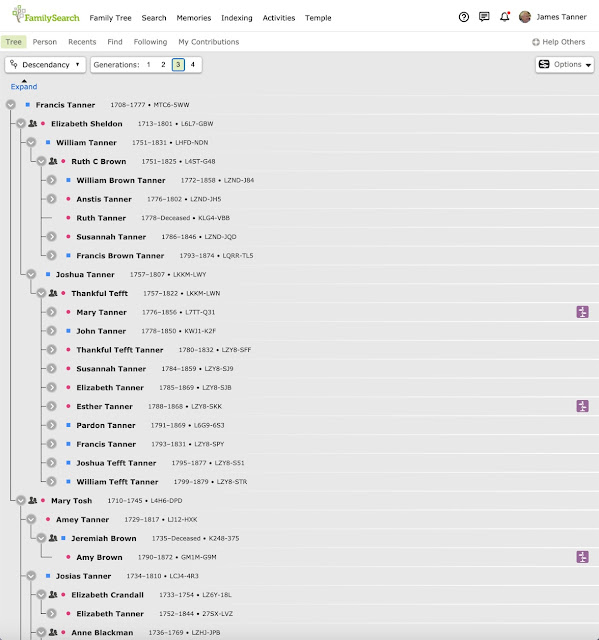I have been reviewing a few of the books from my collection of older genealogical publications dating back into the early 1900s. It is always amazing to me how much of what is written accurately reflects exactly what is taught today as genealogical methodology. You would think that ever-advancing computers and software programs would have had more of an impact on genealogy than it apparently has.
Now, what about all the online databases and family trees? What about DNA testing and matches? What about all of the online instructional classes and webinars? Well, all of that has failed to make significant changes to the basic genealogical research and recording process. An online family tree looks almost exactly like a paper pedigree chart and includes the same information about an individual as was asked for in the original family group records. Here is a pedigree chart from the following book published in 1915.
Genealogical Society of Utah. Lessons in Genealogy. Salt Lake City, Utah: The Genealogical Society of Utah, 1915, Page 53.
Although this is a descendancy chart and not one showing the ancestors for a specific individual, the information contained on the old chart is similar to what is shown today by descendancy pedigree such as this one from the FamilySearch.org Family Tree. the main difference is the older chart is vertical and horizontal and the newer Family Tree chart is entirely vertical.
Although the Family Tree shows a landscape view, a portrait view, a fan chart view, and this descendancy view, they all essentially show the same information. So why is there a problem? With computers today, we could show each individual with a cloud (network) of relationships. Some desktop programs have tried to do this with more or less some degree of success. What is missing from this old standard pedigree view? Almost everything. For each individual, all we have is a name and some dates. Some of these people had multiple spouses. All of these people lived in a variety of locations during their lifetime. The list of things missing is reflected by all "features" of online programs that add maps, detail pages, source lists and etc. Nowhere is all of this information gathered together in one interactive view. I have to have half a dozen or more windows open on my screen to see all the information about any one individual. So I would envision a program that showed each individual as a cloud with connecting to photos, relationships (already available in some programs) but also showing a cloud of sources, maps of locations, and other information about the individual with a way to zoom out to a family (group of related people) view. Some of the programs, such as the Family Tree, now connect sources to multiple individuals, they map multiple locations, and they have connections to alternative family relationships (multiple spouses, etc.) but they do this using separate files and separate entry forms. Essentially, if I wanted to spend the time, I could duplicate all this on paper. In short, what we have today with all this computer power and the internet is a glorified paper system of doing genealogy. Almost all the online and desktop genealogy programs have done is add word processing ability and some interactive network connections to paper forms.
We are still living in genealogical caves. The forms we use online are the same as those used by genealogists and proto-genealogists for centuries. Of course, if you want to preserve information you need forms but there is no reason to stop with pages of entry forms. It not really a major step from the form in the 1915 publication and the form on the FamilySearch.org Family Tree.
Where have I seen this idea displayed? The answer is not very genealogical but the best representation of the idea is in the Iron Man and Avengers movies and visual computers used by Tony Stark. Even though you might think this is science fiction or even fantasy, we could do this today with the powerful computers we already have.







They already have - there was no BIG family tree 100 years ago. You had to drive your horse and buggy to the distant courthouse 100 years ago to find original records. You had to write letters to other researchers and beseech them to reveal family information. Now I can make misteaks so much faster and elegantly!
ReplyDeleteCan it be done better? Of course. Puzzilla comes to mind. The Branches software program did what you suggest.
I think that is a great idea. My family all lived close for generations and were farmers. Following a road on an old census is a lot of fun. Most are related by marriage, servants in one another's homes etc. Would love a way to"cloud" this.
ReplyDelete